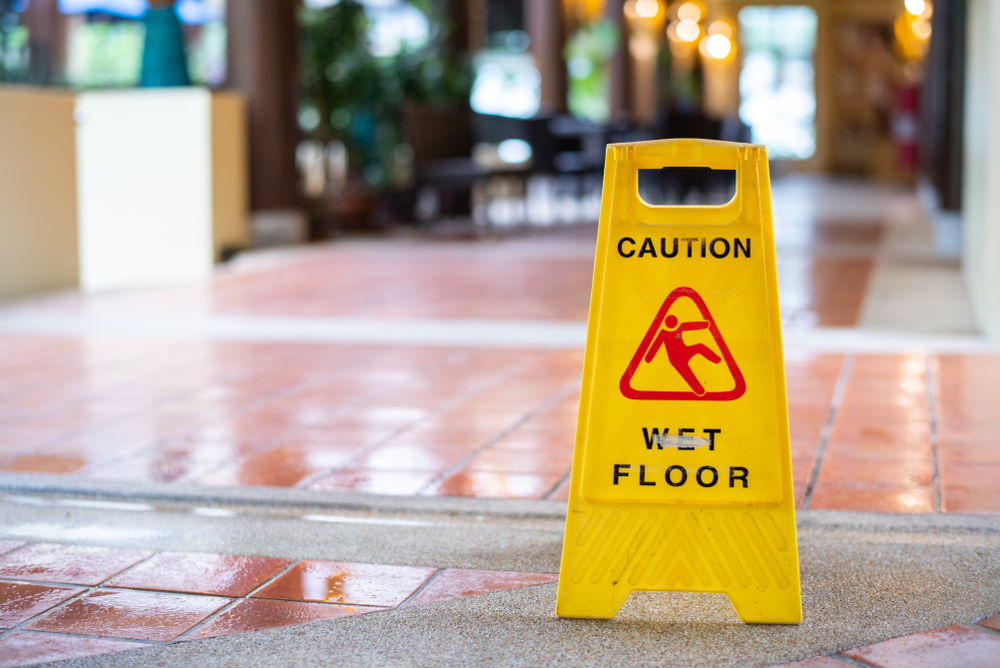 Sprains and strains are often seen as something to laugh off, or a minor injury, but even a simple strain can have serious consequences and needs to be treated with respect and care.
Sprains and strains are often seen as something to laugh off, or a minor injury, but even a simple strain can have serious consequences and needs to be treated with respect and care.
Sprain and strain injuries, also known as musculoskeletal disorders (MSDs), are the most common work-related injury, accounting for nearly two-thirds of all work injuries.
These injuries, which can be disabling and permanent, are caused by hazardous manual tasks (HMT) such as:
- lifting
- carrying
- pushing or pulling
- slips, trips, falls at the same level (STFAL).
The average workers' compensation claim cost of these injuries is over $13,000. However, the average total cost to businesses, family and the community (For example, time lost, nursing, recruitment costs, lost productivity, re-training) for each claim is over $55,000.
These injuries are preventable. After a sprain or strain injury it's important to:
- determine what caused the injury
- make changes to prevent further injuries
- support the worker with rehabilitation and return to work.
When fixed, the business benefits from reduced risk and absenteeism, improved productivity, staff morale and staff retention.
Even tripping over and falling down at work can have serious health consequences. A bad fall can put a good worker out of commission for weeks, costing Queensland businesses more than 256,000 lost work days and over $60 million in workers’ compensation payments.
In addition to workers’ compensation costs, there are financial, physical and emotional costs for the injured worker and their family. A workplace injury often affects injured workers’ well being by restricting their usual home and leisure activities.
Slips, trips and falls can happen in any workplace. They can occur at the entry of a building, in the kitchen, in cold rooms, on loading docks and even as you walk outside the building. More serious slips or trips together with the resulting falls may result in:
- sprains or strains
- broken bones when trying to break the fall
- a back injury due to the sudden and forceful impact during a fall
- burns if it occurs near hot surfaces or if the person is handling hot fluids
- cuts if it occurs near sharp objects.
There are various factors that contribute to the risk of slips and trips. Slips usually occur when there is a loss of grip between the shoe and the floor. This commonly occurs when there is a contaminant between the shoe and the floor. Trips occur when a person’s foot hits a low obstacle in the person’s path, causing a loss of balance. Often, the obstacle is not easily visible or noticed.
The causes of STFAL are varied, and often fall into more than one category. These can include:
Contaminants
Contaminants can be considered as anything that ends up on a floor. Contaminants can be wet such as water, oil or grease, or dry such as dust, metal shavings, plastic bags or off-cuts. Preventing floor contaminants is one of the best things you can do to prevent slips.
Floor surfaces
Floor surfaces require sufficient grip to prevent slipping, especially in areas which may become wet or contaminated. The greater the thickness or viscosity of the contaminants, the greater the slip resistance of the flooring required to protect against slipping.
Cleaning
Cleaning affects every workplace and everyone in the workplace. Besides regular cleaning programs, everyone has a role keeping the work area clear and taking responsibility for their own spills.
Obstacles and other trip hazards
Trips most often occur because of uneven flooring or cluttered walkways with low obstacles which are not easily visible or noticed. Common examples of low obstacles include trailing cables, uneven edges to flooring, gratings or covers, loose mats or carpet tiles and changes of floor surface level.
Environment, including lighting
Poor lighting and distractions such as unfamiliar or unexpected loud noises, or extreme environmental conditions, such as extreme cold or heat, can impact a person noticing slip or trip hazards in their path. Adequate light levels without glare or shadowing is required to highlight potential slip or trip hazards. Other distractions, like those mentioned, should be minimised as much as possible.
People and activity
Work activities, the way the work is organised and attitudes to safety can affect the worker’s ability to see or think about where they are going. For example, people hurrying, carrying large objects, pushing high trolleys or talking on a mobile phone could contribute to the cause of a slip or trip. Workers need to be able to maintain their balance when performing tasks and be able to recover if they slip or trip. For example, when handling loads, workers should have full view of where they need to travel and should also have a free hand to hold onto a rail when walking down steps.
Footwear
Footwear plays an important role in reducing the risk of slips, trips and falls.
For further information, and management strategies, view the HMT injury information page or the STFAL guide here





